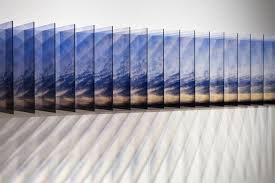Contemporary art has continuously expanded the boundaries of historical time. Instead of limiting itself to the logic of linear succession between movements and styles, it operates in a field where past, present, and future intertwine.
This way of articulating multiple temporalities moves away from the idea that art is merely the search for novelty and reorients its function as a critical practice in the face of a complex, unequal, and image-saturated world.
How Contemporary Art Redefines the Past and Present
The past reappears in contemporary art not as a nostalgic quotation, but as an active archive. Works that revisit visual traditions, colonial narratives, manual techniques, or forgotten rituals highlight the persistence of historical structures in the present.

This act of retrieval is not intended to reaffirm pure origins or outdated styles, but to question gaps, silences, and omissions. The contemporary artist’s work with historical materials is, above all, a process of destabilization. The present, in turn, emerges as a field of urgency.
Artists deal with issues related to the global circulation of images, new digital technologies, environmental crises, and gender and race tensions. The present time, marked by acceleration and information overload, is addressed not only in the content of the works but also in their forms of exhibition and reception.
Contemporary art questions the place of the work as a stable object, proposing procedural, ephemeral, or participatory practices.
The Future and the New Paradigm of Contemporary Art
The future appears not as a utopian prediction, but as a field of critical projection. Artistic imagination approaches speculative practices, modeling possible worlds and discussing the ethical consequences of emerging technologies.
This intertwining of temporalities has transformed the understanding of art. The notion of evolution as a succession of novelties is no longer sufficient. The modern paradigm, which celebrated formal ruptures and technical innovations, gives way to a focus on the social, political, and historical implications of artistic practices.
Novelty in itself is no longer a criterion of value; what matters is the ability to shift perspectives and produce critical thought. Thus, contemporary art is not just a stage in the historical development of visual languages, but a field where temporalities cross and challenge each other.
This condition expands the role of art: from a mere showcase of technical innovations, it becomes a forum for reflection on how societies narrate their past, live their present, and project their futures.



